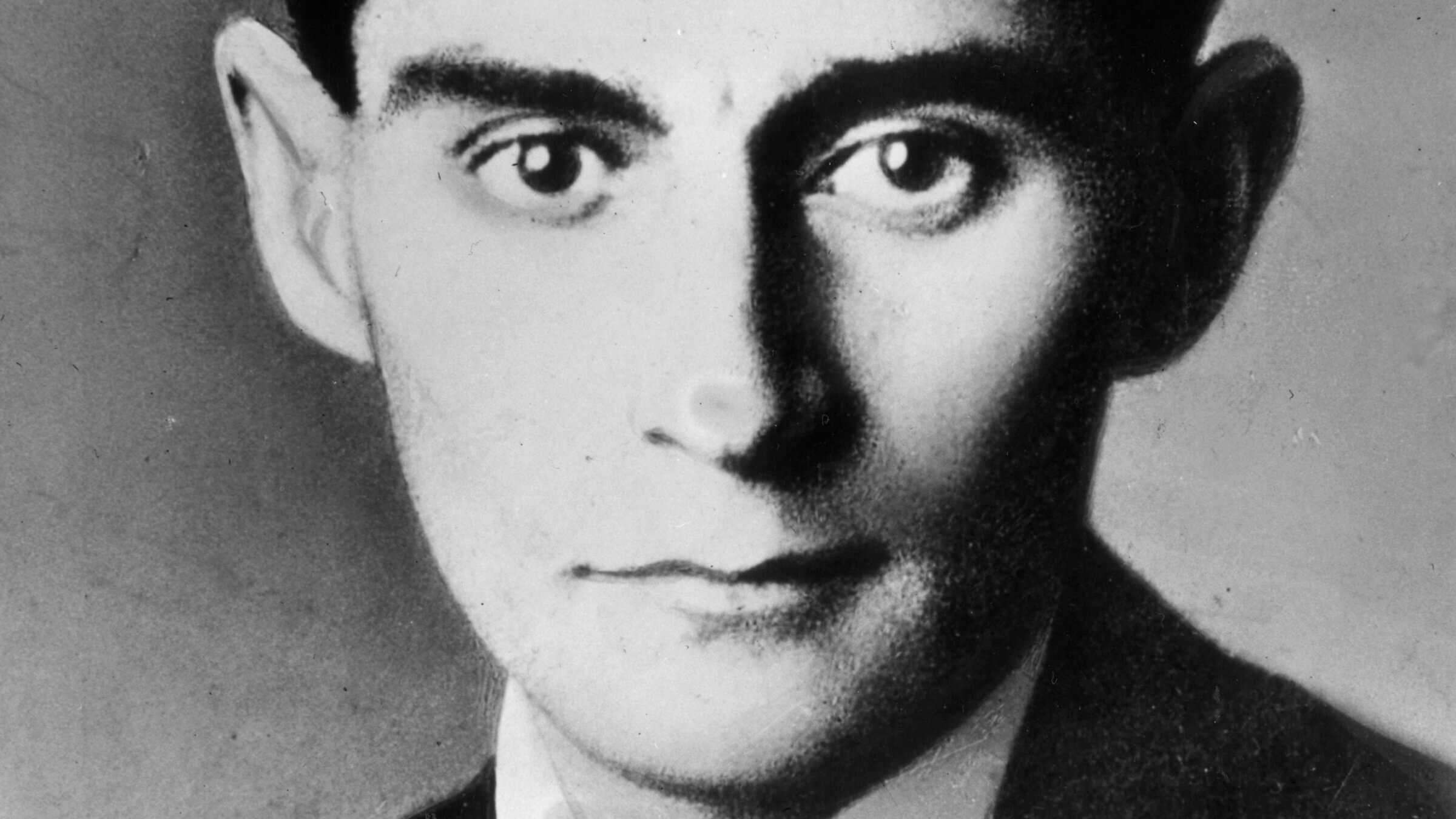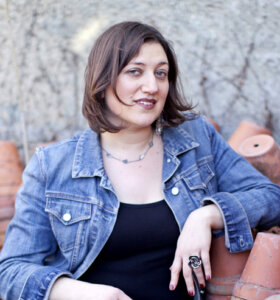Did Franz Kafka predict the COVID-19 pandemic?
And other questions raised by a new collection of the inscrutable author’s aphorisms

A portrait of Franz Kafka. Photo by Getty Images
Translator Shelley Frisch has long been immersed in the life and work of Franz Kafka. She translated the definitive three-volume biography of Kafka by Reiner Stach, and now she has returned with a glittering new translation of Kafka’s aphorisms, along with a fascinating commentary also written by Stach. The book features tantalizing images of Kafka’s handwritten drafts, including what he crossed out and what he added. And yes, Kafka edited heavily.
In Frisch’s hands, the aphorisms are brief, strange, mysterious and multilayered. Yet they always seem clear and inviting enough to welcome the reader inside their space for some serious contemplation. It is impossible not to feel rocked to the core after encountering Aphorism 16, which reads, in its entirety: “A cage went in search of a bird.”
Each page of “The Aphorisms of Franz Kafka” features an observation on human nature that has the power to grip the reader and not let go. Each aphorism appears in German and in English, so that readers with even a little bit of German knowledge can see how individual words, images and ideas repeat in Kafka’s work, forming a web of interconnectedness. Facing each bilingual aphorism is an extensive commentary, making this edition a very Jewish reading experience.
Kafka’s aphorisms seem especially fitting for a moment when all of us are physically and morally exhausted, baffled by the world and our daily tasks. Consider Aphorism 34: “His exhaustion is that of the gladiator after the battle; his work was to whitewash a corner in a clerk’s office.”
What does it all mean? This edition resists easy answers, and that is its power.
“We have come a long way from Max Brod’s packaging of the aphorisms under the title ‘Reflections on Sin, Suffering, Hope and the True Way,’ which nudged Kafka’s words in the theological direction Brod hoped to take them,” Frisch writes in her translator’s note, which made me want to ask her about her experience translating Kafka’s aphorisms — and living with so much Kafka for so long.
In the translator’s note to “The Aphorisms of Franz Kafka,” you write: “Translating this slim but seminal volume has deepened my understanding of all of Kafka’s writing, even after the extremely deep dive I did for the biography.” How did your understanding of Kafka deepen by translating the aphorisms? What do you think it is about these aphorisms that makes them seem so essential and glittering?
I could write about this topic forever, but I’ll stick to an analogy involving the painter Piet Mondrian, born just a few years before Kafka. Some years ago, I saw an exhibit of Mondrian’s early paintings, which were conventionally representational and differed starkly from the grid-and-primary-colors scheme we associate with his work. When I got home, I looked into his artistic evolution toward abstraction, toward eliminating everything but lines and colors, and how he landed at what he came to call Neo-Plasticism, which further pared down his use of lines and color to only horizontal and vertical lines and primary colors in a quest to arrive at universal and unadorned essentials. The resulting minimalist form yielded maximal complexity for both Mondrian and Kafka.
Intriguingly, both men stuck to a minimalist diet as well — he rarely touched meat, and even his choice of vegetables was highly restrictive. Any further dietary limitations might have rendered him a veritable “hunger artist.”
When I began work on this volume, I was reminded of Mondrian’s quest for reduction as a means of attaining a higher level of understanding. In their pithy, stripped-down form, the aphorisms lay bare Kafka’s thinking. Once narratives have been reduced or eliminated, we are given a new way in to Kafka’s storytelling. For this reader, these aphorisms, however cryptic, open the all-important interpretive door — just a (welcome) crack—in his “Before the Law” parable in “The Trial.”
Less, it turns out, truly is more.

Something amazing about this edition is the inclusion of images of Kafka’s originals for Aphorism 36 — complete with all his crossing-outs. How did your knowledge of Kafka’s process and extensive edits influence your translation?
I’ve been fascinated by Kafka’s manuscript drafts, replete with deletions and completions, for many years. An early draft of his unfinished novel “The Castle” shows that he wrote its first three chapters as a first-person narrative, then crossed out the pronouns and replaced each ‘I’ with ‘he’.
Our computer age has unfortunately diminished these kinds of archival finds for recent and current writers, but we do have revealing material about the evolution of Kafka’s texts. It is striking (pun intended) how often Kafka opted to strike out phrases or the entirety of aphorisms he had constructed, deconstructed and reconstructed so painstakingly.
Kafka never completed any of his three novels (“The Trial,” “The Castle” and “The Man Who Disappeared” (aka “Amerika”), and his publisher, Kurt Wolff, had to pry texts out of his unwilling hands in order to publish them. With the exception of “The Judgment,” which Kafka regarded as a perfect story, he was assailed by doubts about his writing, and his many revisions would seem to indicate where he was least content with what he had committed to paper. And of course we all know his alleged intention to have his friend Max Brod burn his oeuvre after his death.
These extensive revisions and deletions are not limited to the aphorisms. We find earlier versions of some of the aphorisms, or at least their themes, in Kafka’s octavo notebooks and diary entries. As Reiner Stach points out in the commentary for Aphorism 16 (“A cage went in search of a bird”), the earlier wording, in the octavo notebooks, was this: “A cage went to catch a bird,” which contains an element of overpowering that he evidently retreated from as he wrote the set of aphorisms.
Kafka continued to circle in on and refine his earlier versions. In many other instances, this refinement reflected his fixation on maximal conciseness, to say everything that must be said, but no more, and to strip away any adornment. I don’t think that my translations were altered by this knowledge in shaping my word choices, but it did show me how he agonized over his word choices, and, to a different degree and for different reasons, so did I!

One of the joys of reading these aphorisms is noticing the repeating themes, like evil, belief and human impatience. Reiner Stach sees many additional connections between the aphorisms, and you write that one of your challenges as a translator was to convey those connections to the English reader. What is an example of a word or concept that Kafka uses multiple times that made you reassess meanings in Kafka’s texts?
I hope you won’t mind if my response focuses on a brief prose text that Kafka composed during the same time period as the aphorisms, but is not part of the collection itself. In my translator’s note, I wrote about how the German word Weg in the aphorisms consistently refers to a path, in an existential or conceivably even religious sense of charting a path in life. The text I have in mind is known as “Ein Kommentar” (“A Commentary”), but is more typically called “Give Up” or “Give It Up.”
In “Give Up,” the firstperson narrator attempts to make his way to the train station, but realizes he has lost track of both the time and the correct route. He approaches a police officer and asks for the Weg, whereupon the officer, advising him to abandon his quest, turns away like someone who wants to be alone with his laughter. I memorized this story decades ago, because it both baffled and delighted me, but in my mind’s eye, Weg was a physical road. While I was translating Reiner’s commentary for this book I came to reassess the word and consequently the thrust of “Give Up” as a whole, with the physical road transformed into a metaphysical one. The text still baffles and delights me, but in a new way.
Aphorism 17, in your translation, reads: “I have never been in this place before: breathing works differently, and a star shines next to the sun, more dazzlingly still.” In the note, Stach explains that for Kafka, “the star is a metaphor not only for what is far away, but also for what is radically different, in both a positive and negative sense.” Just a few weeks after writing Aphorism 17, Kafka noted in the octavo notebook: “Anyone who believes cannot experience miracles. By Day One doesn’t see stars.” He went on to write: “Evil is the starry sky of the Good.” Reading that passage, I thought, “I’ll never look at a star the same way again.” How did the experience of translating Reiner Stach’s commentary on Kafka make you think about the process of translation — its possibilities and perhaps its limitations?
Funny you should ask about stars! I’m now translating a book about Adorno, who invoked the image of constellations as a key theme and structuring principle of his writings, so I’m once again grappling with this imagery, in its myriad thematic, metaphoric and structural dimensions.
The challenge here wasn’t so much how to translate the aphorism, but how to understand it. In a collection that eludes easy (or any!) interpretation, this aphorism is more elusive still. Aphorisms, by their minimalist nature, both defy and demand interpretation. Andrew Hui’s “Theory of the Aphorism” rightly notes that “the best aphorisms admit an infinitude of interpretation, a hermeneutic inexhaustibility.” By that criterion, and virtually any other, this aphorism encapsulates the essence of aphoristic writing. Indeed, Reiner Stach concludes that Aphorism 17 might well serve as a motto for the collection as a whole.
You ask how translating Reiner’s commentary made me reflect on translation. I’m struck, as I am in every one of my translations, by how wedded to medium our messages are, which is to say that translation is so challenging because writers exploit the quirks of their language to bring home a message, engaging the senses, acoustically and otherwise, to expand the semantic range of what is being expressed. Language is not just what words mean, but how they mean — what signals they send off as they go about signifying. As Toni Morrison once remarked in an interview, “You rely on a sentence to say more than the denotation and the connotation; you revel in the smoke that the words send up.” The challenge is to harness, or let loose, smoke and enable words to capture and release meaning every which way.
In the case of this project, I am speaking through both Kafka and Stach, and not for the first time. In Reiner Stach’s three-volume biography of Kafka, I faced this challenge over the course of nearly 2,000 pages, and the voices I needed to capture there also included the characters in Kafka’s stories, along with the overtones and undertones of his epistolary and diaristic communications. So in a sense this was an easier project, and certainly a briefer one, yet because each of Kafka’s words — and Stach’s — had been so meticulously selected and aligned with its surrounding words in the German source texts, I had to rise to their stylistic exquisiteness in my English renderings, while remaining spot-on accurate in conveying the intended ranges of meaning. I can only hope to have come reasonably close.
The world is reopening, sort of, and I was amazed to find that the last aphorism here, Aphorism 109, tells readers that we don’t need to go anywhere to experience the world. The last few lines of the aphorism read:
“It is not necessary for you to leave the house. Stay at your table and listen. Don’t even listen; just wait. Don’t even wait; be utterly still and alone. The world will offer itself to you to be unmasked; it cannot do otherwise; it will writhe before you in ecstasy. “
Did you translate this during the coronavirus era? How do these lines seem to comment on our strange and socially distanced moment in time?
Great point! I did indeed translate this book during the pandemic, but I’ve often contemplated this issue of how experience comes from within. Since I left teaching, which is highly interactive in nature, to devote myself full-time to translating at home, “staying at my table and listening … utterly still and alone,” I’ve lived the life Kafka describes here, inviting the world (of words, at any rate) to offer itself to me.
And now it seems as though most everyone has gotten a taste of coping with prolonged solitude in our socially distanced times. Has it made us more introspective, more receptive to the world’s overtures? It’s hard to say.
Kafka is a shining example of self-imposed solitude. He never married, he lived with his mom and dad for most of his life, he stayed in a job at an insurance institute that he loathed more than loved, he rarely traveled, and although he wrote a whole (albeit unfinished) novel about America, he never saw that country. Kafka dreamed of getting away — to Berlin, to Palestine — but never followed through. Even his medically necessary convalescences were not to the usual spas, but to cold and damp spaces in inhospitable locations. He even sought out a fundamentalist Christian nudist colony for one of his convalescences, where he was reluctant to shed his underwear, perhaps fearing he would be identified as a Jew.
So in some sense he was the ultimate homebody — albeit a resentful one, as his vitriolic letter to his father made clear. Kafka is often described as prescient, usually in regard to the terrible future that set in less than a decade after his death.
Who knows: perhaps he even foresaw this pandemic?
I can’t resist asking you: Do you have a favorite Kafka aphorism? And if so, I’d love to know why you love it.
How can one home in on a decision like that? I continue to be surprised, intrigued and enchanted by these aphorisms, but more as a collective whole than as individual snippets.
Some of the aphorisms are visually based — leopards breaking into a temple, an exquisite billiard table; others dispense with a visual and even narrative dimension, and still others seem more like an exasperated outburst: “Psychology, for the last time!” I love ’em all.
Here I’ll list just a few of the ones to which my thoughts keep straying: The aforementioned and oft-quoted (Aphorism) 16 — “A cage went in search of a bird,” with its startling shift of perspective; 18 —“If it had been possible to build the Tower of Babel without climbing it, that would have been allowed,” which touches on a core concept in my doctoral dissertation written many moons ago; 67 — “He runs after the facts like a novice skater who also practices someplace where it is forbidden,” with its off-kilter series of images that don’t quite come together for me but which never fails to grab my attention; 58 — “The way to lie as little as possible is only by lying as little as possible, not by having the least possible opportunity to do so.”
Then there is 87 — “A belief like a guillotine, as heavy, as light” — which I ponder again and again, and I read it aloud, as I love the way its words sound in combination, cut in half by, of all things, a guillotine, placed precisely at the metrical and physical halfway mark.

















